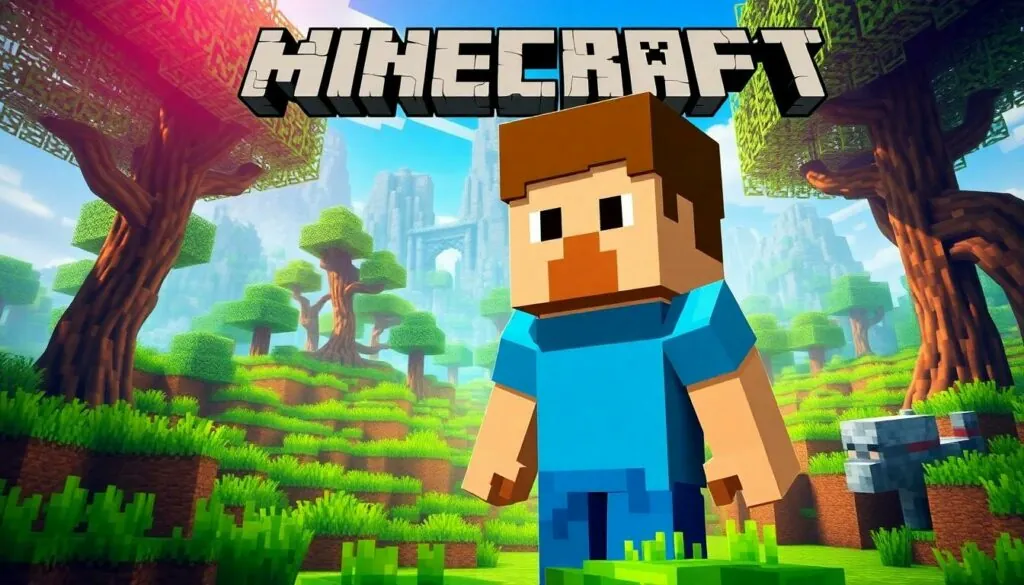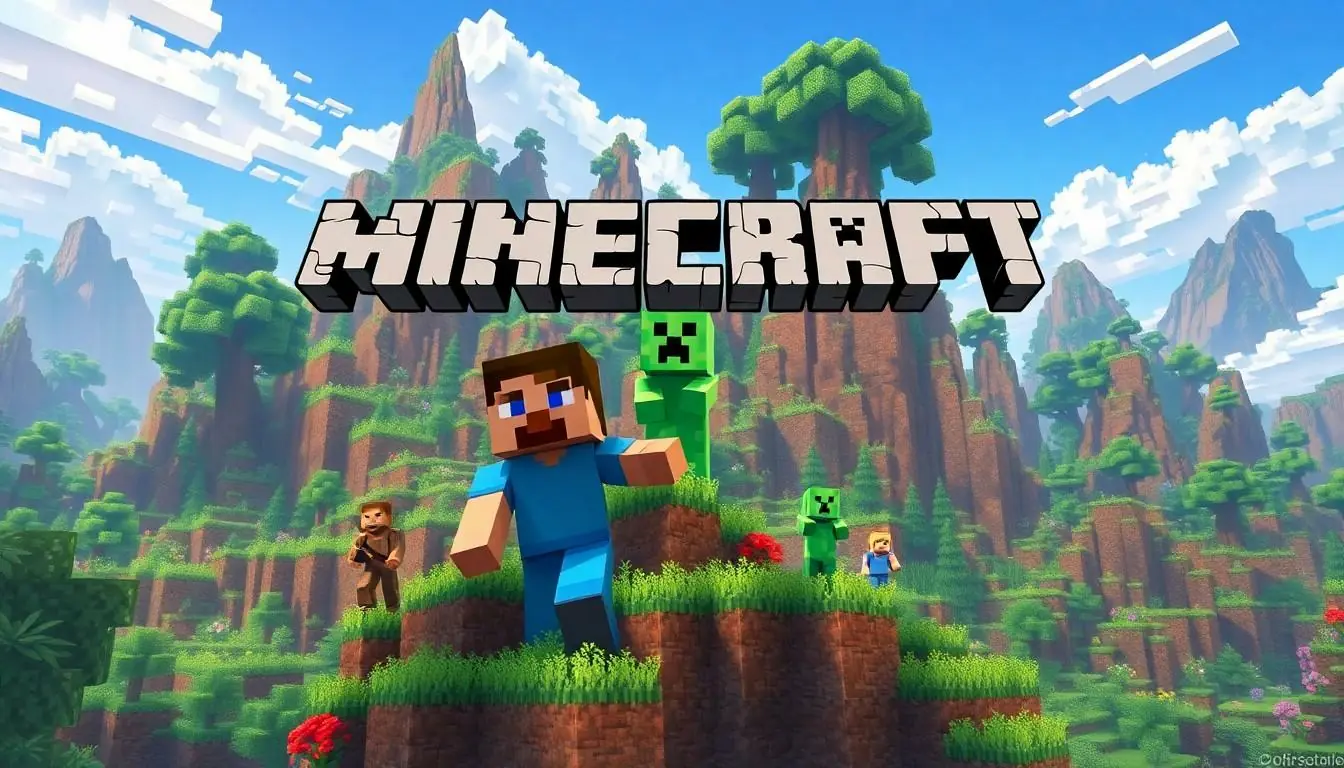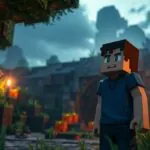Table of Contents
ToggleMinecraft cover art isn’t just a pretty picture; it’s the gateway to a pixelated universe where creativity knows no bounds. From blocky landscapes to iconic characters, these covers capture the essence of a game that’s enchanted millions. They invite players to embark on epic adventures or simply build the castle of their dreams—if they can resist the urge to dig straight down.
Overview of Minecraft Cover Art
Minecraft cover art plays a crucial role in portraying the essence of the game. Each design reflects iconic elements, from vibrant blocky landscapes to recognizable characters. These graphics capture the imagination, inviting new players into the expansive universe.
Various editions of the game showcase distinct cover art. For example, the original Java Edition features a serene image of Steve, the player character, amidst a lush environment. Meanwhile, console editions often highlight unique themes, incorporating specific characters or mobs. Each iteration of the cover has unique characteristics, aligning with the game’s evolution over time.
Artistic styles also vary by region. Different territories sometimes present adaptations that resonate more with local audiences. These adjustments maintain the game’s core appeal while embracing cultural nuances.
Notably, cover art has evolved throughout Minecraft’s history. New updates bring freshness, as developers often revamp the visual representation to inspire excitement. This continual change reflects the game’s commitment to growth and creativity.
Additionally, cover art sparks conversations within the gaming community. Fans frequently analyze and discuss the symbolism present in each design. Cover images often stimulate players’ curiosity, encouraging them to explore in-game possibilities.
The significance of Minecraft cover art extends beyond mere visuals. It represents the essence of adventure and creativity that defines the game, capturing both newcomers and seasoned players alike.
Evolution of Minecraft Cover Art
Minecraft cover art features a dynamic evolution that mirrors the game’s growth over the years. Each design reflects key aspects of the game’s universe while appealing to diverse audiences.
Early Designs
Early designs showcased simplicity, emphasizing iconic characters like Steve and elements from the blocky landscape. The original Java Edition cover portrayed a vibrant scene, inviting players into a lush world of possibilities. Early console editions often included themes that resonated with specific platforms, enhancing viewer connection. These initial designs laid the groundwork for subsequent artwork, solidifying Minecraft’s identity in the gaming industry. Nostalgia remains powerful, with many players recalling their first encounters through these fundamental images.
Recent Releases
Recent releases incorporate modern artistic techniques and varied visual styles, enhancing engagement with both new and veteran players. The cover art for updated editions often highlights significant gameplay additions like new biomes or creatures. Enhanced graphics display more intricate details, showcasing the game’s continuous innovation. Cover art now also adapts to seasonal events, reflecting current trends and festivities. Each design extension fosters a community dialogue, with fans analyzing visuals to predict future updates. Such engagement highlights the ongoing relationship players maintain with Minecraft’s evolving landscape.
Impact of Cover Art on Game Perception
Cover art significantly influences players’ initial impressions of Minecraft. Visual designs play a crucial role in attracting new players while encapsulating the game’s adventurous spirit.
Artistic Elements
Artistic elements in cover art establish an inviting and imaginative atmosphere. Vibrant colors, dynamic character portrayals, and iconic blocky landscapes create an immediate connection with potential players. Each image reflects key game aspects, like exploration and creativity. Shadows and textures showcase the game’s unique aesthetic. Various editions feature distinct designs that evoke excitement and curiosity. Artistic choices resonate with the core gameplay, making cover art a powerful storytelling tool.
Branding and Recognition
Branding relies heavily on recognizable cover art to differentiate Minecraft from other titles. The consistent use of character Steve across multiple designs fosters familiarity among fans. Iconic imagery reinforces brand identity, resulting in quick recognition in retail settings. Clear visual motifs communicate the game’s core themes, encouraging discussions within the gaming community. Current and past covers capture the essence of Minecraft’s evolution, ensuring players associate it with creativity and adventure. Each design not only serves marketing purposes but also strengthens brand loyalty, appealing to both new and returning players.
Community Reactions to Minecraft Cover Art
Community reactions to Minecraft cover art vary widely, reflecting the diverse player base. Players often analyze designs for hidden meanings, crafting fan theories that enhance their engagement with the game. Observers appreciate how cover art encapsulates nostalgic feelings, connecting them to memorable experiences.
Fan Interpretations
Fan interpretations showcase creativity and imagination surrounding the cover art. Various interpretations arise from visual elements, prompting discussions on character symbolism and thematic significance. Some fans create their own art inspired by the official covers, further expanding the Minecraft universe. Often, these interpretations highlight a community admiration for artistic styles. Players express these feelings through social media posts, fan art, and videos, fostering a sense of community connection.
Controversies and Discussions
Controversies and discussions frequently emerge regarding Minecraft cover art, especially around design changes. Many players voice opinions on new styles, citing concerns about authenticity. Some argue certain editions stray too far from the original vibe, sparking debates about the game’s direction. Discussions also center around representation in cover art, prompting conversations about inclusivity. Observers follow these debates closely, reflecting the passion and investment the community has in the game’s identity.
Conclusion
Minecraft cover art is a vital aspect of the game’s identity that resonates with players around the world. It not only attracts newcomers but also evokes nostalgia for seasoned fans. Each design tells a story and reflects the game’s evolving nature while maintaining a connection to its roots.
As the community continues to engage with these visuals, players find inspiration and meaning in every detail. The discussions sparked by the cover art highlight the passion within the Minecraft community and reinforce the game’s enduring appeal. Ultimately, these artistic representations invite players to dive into a world of limitless creativity and adventure.





